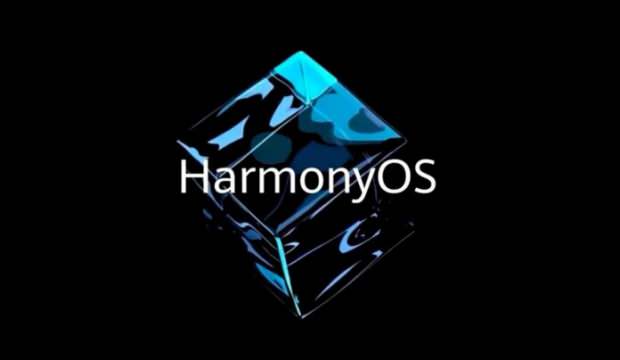Huawei has presented HarmonyOS 2.0 at HDC 2020, Huawei’s complete alternative to Android for mobiles and any smart device.
A year ago, Huawei presented HarmonyOS at the HDC of 2019, a system that depending on the day you asked Huawei was a replacement for Android or was a system for connected devices. A year later, we see how Huawei seems to begin to have a clearer and more ambitious idea about where its new system is pointing.
HarmonyOS is Huawei’s proposal to dominate Android, an ecosystem that since Trump’s veto has made the Chinese manufacturer out of place. The development of Harmony however, is not intended to replace Android, but to surpass it.

Huawei insists that, although the smartphone remains a device of great importance, we are in an era in which there are more and more smart devices. HarmonyOS aspires to be a complete operating system suitable for any device, such as television, car, clock or even your next oven.

At the development level, Huawei‘s goal is that the creation of an application is not limited only to mobile phones, but by writing the code, it can be adapted to any intelligent system. Huawei wanted to illustrate with two very basic examples, a maps application in which we put the address on the mobile and the indications appear on the clock.
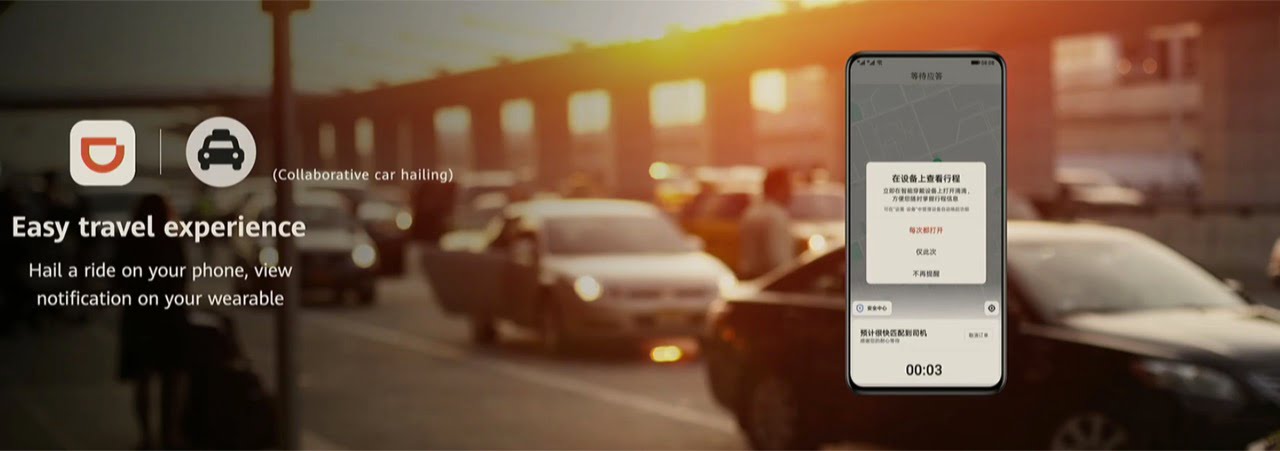
Another example is an Uber-style application, where we place the order from the mobile and on the clock we receive information about when the driver will arrive and we will have the option to pay him.
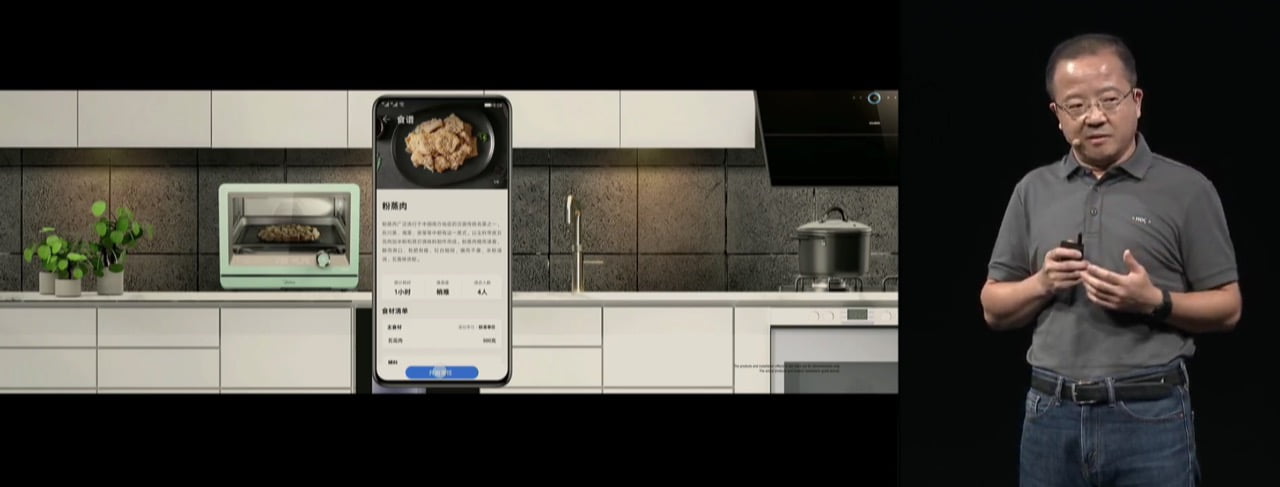
Home devices with HarmonyOS will also be able to offer an integrated smartphone experience. For example, when we want to cook a recipe that we have on our mobile, the smart oven will be able to automatically configure itself based on the recipe.
- Huawei’s first HarmonyOS phones coming next year
- Samsung might stop supplying chips to Huawei due to US veto
- LG and Samsung won’t provide Huawei panels anymore
Development tools and Open Source community

Like every modern development system, HarmonyOS requires an application development environment. To this end, Huawei has also introduced Huawei DevEco 2.0, its integrated development environment for HarmonyOS applications.
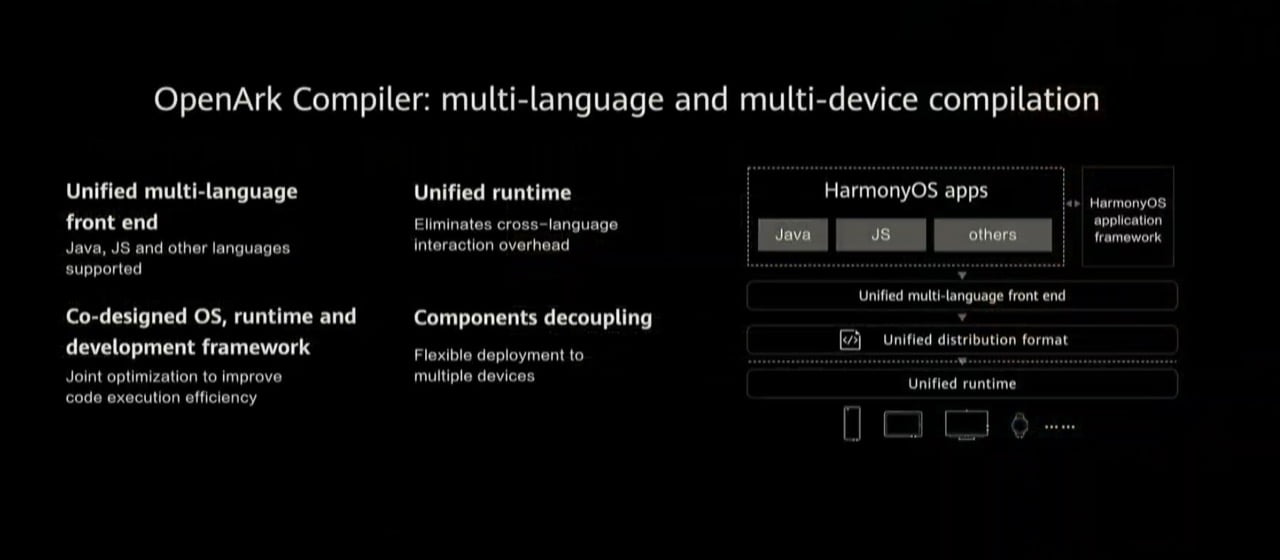
When building applications, HarmonyOS 2.0 relies on the OpenArk compiler. Does the name sound familiar to you? This is because it is the compiler that Huawei uses with its Android phones since last year, a compiler nowadays compatible with Jaba, JavaScript and other languages. The choice of Java is mandatory as it is the initial language they have had to use for Android.
JavaScript, on the other hand, is a more than successful choice, as it is one of the most popular languages among web developers, a language that does not stop growing.
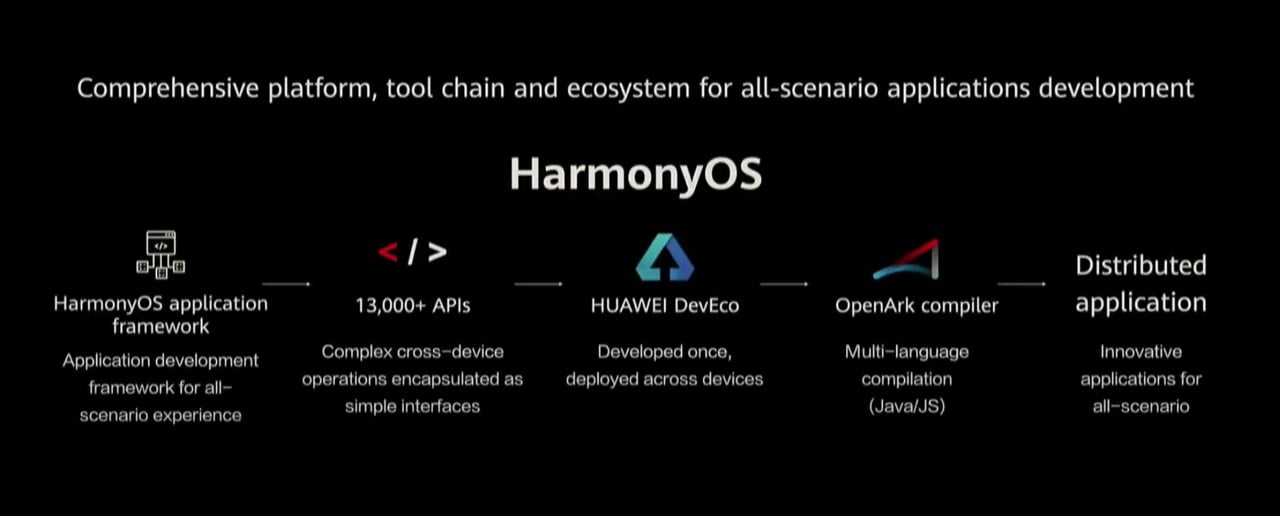
The HarmonyOS environment also has a set of more than 13,000 APIs, to facilitate the development of functions.
HarmonyOS release date
HarmonyOS will begin to arrive in phases. First of all we have the beta versions for developers that begin to arrive from today, September 10. This first version is intended for televisions, watches and head units? (we assume augmented reality glasses).
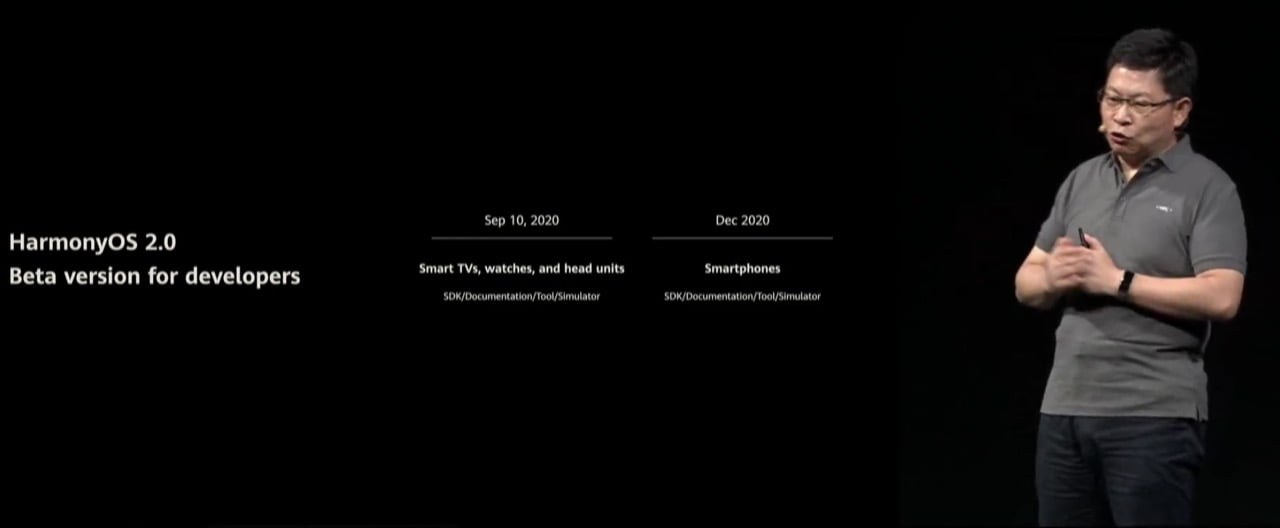
On the other hand, the version of HarmonyOS 2.0 for smartphones will be available in December 2020. With the arrival of these betas, the SDK, documentation, tools and emulators will be available, each one on its respective date.
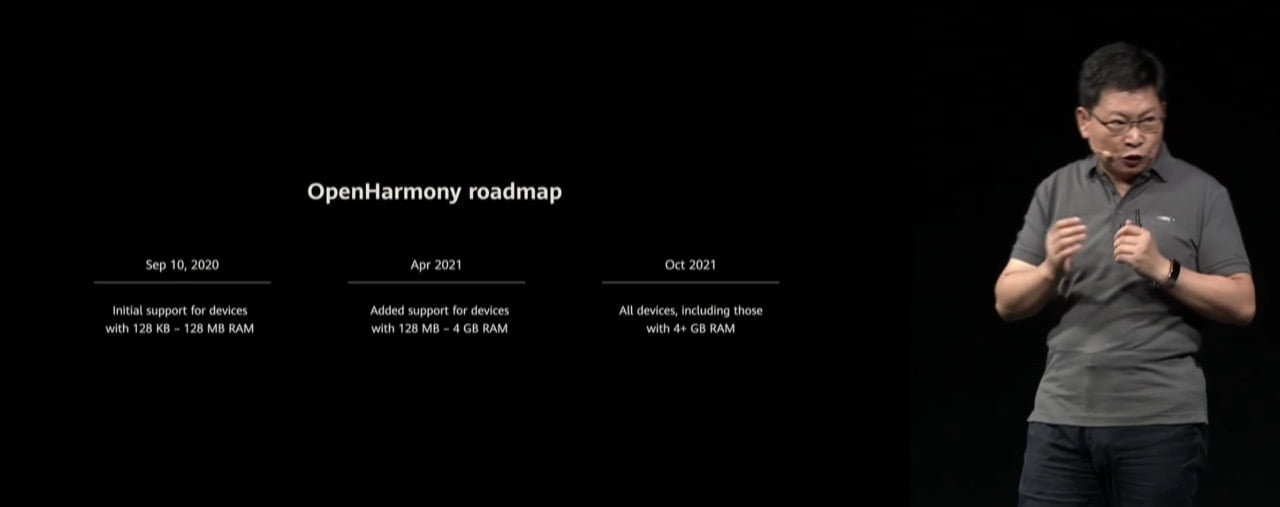
Regarding the availability of OpenHarmony, the open source operating system on which HarmonyOS will be based, we have an initial launch for September 10 on IoT devices, while in April 2021 it will reach more sophisticated devices. Full HarmonyOS support for any device, including those with more than 4GB RAM (computers and smartphones) will arrive in October 2021, a year from now.

